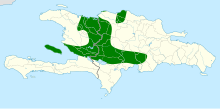
The russet-throated puffbird is a species of near-passerine bird in the family Bucconidae, the puffbirds, nunlets, and nunbirds. It is found in Colombia and Venezuela.
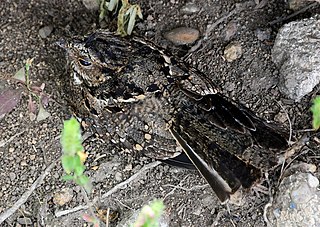
Anthony's nightjar, also known as the scrub nightjar, is a species of nightjar in the family Caprimulgidae. It is found in Ecuador and Peru.

The Cuban nightjar, sometimes also Greater Antillean nightjar, is a species of nightjar in the family Caprimulgidae. It is endemic to Cuba.

The Hispaniolan nightjar is a nightjar species endemic to the Caribbean island of Hispaniola, which is shared by the Dominican Republic and Haiti.

The pygmy nightjar is a species of nightjar in the family Caprimulgidae. It is endemic to Brazil.

The eared poorwill is a species of nightjar in the family Caprimulgidae. It is endemic to Mexico.

The ocellated poorwill is a species of nightjar in the family Caprimulgidae. It is found in Argentina, Bolivia, Brazil, Colombia, Costa Rica, Ecuador, Honduras, Nicaragua, Paraguay, and Peru.

The Chocó poorwill is a species of nightjar in the family Caprimulgidae. It is found in Colombia and Ecuador.

The Jamaican poorwill, also known as the Jamaican pauraque or Jamaican least pauraque, is a species of nightjar in the family Caprimulgidae. It is endemic to Jamaica and has not been recorded since 1860.
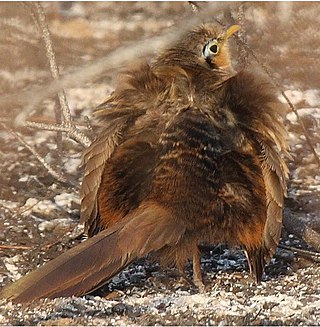
The lesser ground cuckoo is a species of cuckoo in the tribe Neomorphini of subfamily Crotophaginae. It is found in Costa Rica, El Salvador, Guatemala, Honduras, Mexico, and Nicaragua.
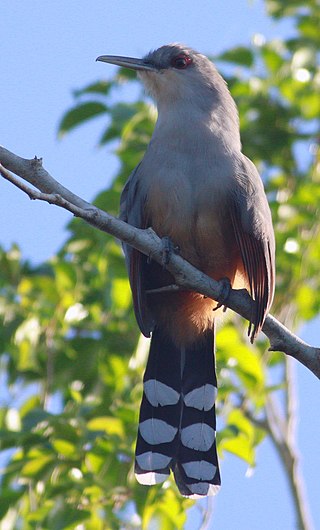
The Hispaniolan lizard cuckoo is a species of bird in the tribe Phaenicophaeini, subfamily Cuculinae of the cuckoo family Cuculidae. It is endemic to the island of Hispaniola that is shared by Haiti and the Dominican Republic.

The eastern chat-tanager is a Near Threatened species of passerine bird belonging to the family Calyptophilidae. It is endemic to the island of Hispaniola, in the Dominican Republic; it is possibly extirpated from Haiti.

The pale-browed treehunter is a species of bird in the Furnariinae subfamily of the ovenbird family Furnariidae. It is endemic to Brazil.

The thick-billed miner is a species of bird in the subfamily Sclerurinae, the leaftossers and miners, of the ovenbird family Furnariidae. It is endemic to Peru.
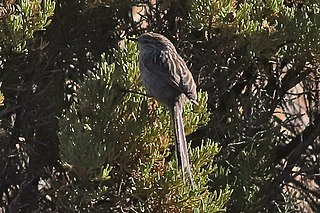
The streak-backed tit-spinetail, or streaked tit-spinetail, is a species of bird in the Furnariinae subfamily of the ovenbird family Furnariidae. It is found in Chile and Peru.

The green-tailed warbler, also known as the green-tailed ground-tanager, is a species of bird of the family Phaenicophilidae, the Hispaniolan tanagers. It is endemic to the island of Hispaniola which is shared by Haiti and the Dominican Republic.

The grey-crowned palm-tanager or grey-crowned tanager is a Near Threatened species of bird in the family Phaenicophilidae, the Hispaniolan palm-tanagers. It is endemic to the Caribbean island of Hispaniola, in both the Dominican Republic and Haiti.

The collared antshrike is a species of bird in subfamily Thamnophilinae of family Thamnophilidae, the "typical antbirds". It is found in Ecuador and Peru.

The Andean flicker is a species of bird in subfamily Picinae of the woodpecker family Picidae. It is found in Argentina, Bolivia, Chile, Ecuador, and Peru.

The pale-tailed canastero, is a species of bird in the Furnariinae subfamily of the ovenbird family Furnariidae. It is endemic to Peru.
